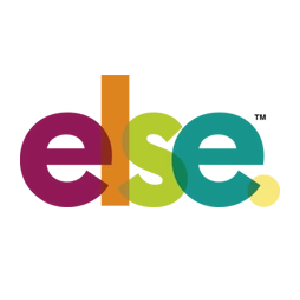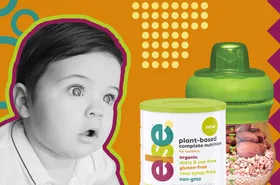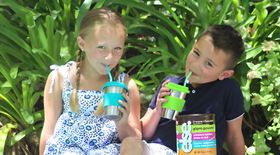My Search for the Healthiest Baby Formula: A Dietitian's Journey
Find out how a registered dietitian found their way to the healthiest baby formula.
Published August 14, 2024

For years, parents have faced a daunting challenge: choosing the healthiest formula for their baby. With countless options flooding the market, filled with complex ingredients and conflicting information, it's easy to feel overwhelmed and unsure of what's truly best for your little one.
The pressure to make the right decision for your baby's health and development can be immense. It can make many parents feel anxious and frustrated. But what if there was a clear, expert-guided path to finding the ideal formula?
» Choose the healthiest plant-based baby formula for your kid
What Are the Healthiest Baby Formulas?
I started working with kids as a Registered Dietitian over 15 years ago. Back then, we always told parents that breast milk was the best food for babies. But we knew that wasn't always possible, so we also helped them choose the healthiest baby formula when needed.
Here are the most common types we suggested:
- Premature baby formula that has extra calories and nutrients for babies born too early.
- Hydrolyzed formula with broken-down milk protein.
- Standard formula for babies born on time and has whole milk protein.
- Gentle formula that's partially broken-down milk protein.
- Soy formula for babies who can't tolerate milk, with exceptions for infants also allergic to soy.
- Elemental formula that's completely broken down for babies with severe milk allergies.
Back then, I focused on finding the healthiest formula for each baby based on what they could tolerate and how well they grew. Usually, we could find a baby formula brand that was the safest for a specific infant.
The biggest issue with the formulas that were easiest to digest—the hydrolyzed and elemental ones—was that they tasted awful. Babies really didn't like them.
» Discover the best formula to mix with breast milk
So What Changed?
About eight years ago, when I was expecting my first baby, I started looking really closely at the healthiest infant formulas. I was surprised to find that there weren't many new options, except for a couple of organic ones.
The baby nurse suggested a different formula that wasn't organic but was supposed to be gentle. I wasn't happy about it because it had corn syrup, but I was a new mom and trusted the nurse and my doctor.
After a few weeks, I switched back to the only other organic formula available. It wasn't perfect, but it was the best I could find.
When I had my second baby, I learned about some better formulas made in Europe. But they were hard to find and really expensive in the US. I knew that my baby would start eating real food soon, so I wasn’t too worried.
But I kept thinking about how great it would be to make a healthier formula myself. Babies grow so fast in their first year, so why wasn't there a better option for parents who couldn't breastfeed?
» Transitioning to solids? Explore the best organic cereals for infants
Else's Plant-Based Formula Alternative
My kids are in elementary school now, and I'm disappointed that there haven't been many improvements in baby formula. I was so excited to learn about Else Nutrition and help them develop their products.
It's great to see a plant-based option for babies, especially now that more people are interested in plant-based diets. Else is a fantastic product to help babies and toddlers grow healthy. Keep reading to find out why.
Else's Omega Plant-Based Formula is safe for kids with milk and soy allergies. Almond and buckwheat allergies are rare in children compared to other foods like eggs, wheat, fish, or peanuts.
Important Update: Recent studies show that introducing allergenic foods early, instead of waiting, can actually help prevent allergies. This means you should offer your baby foods like wheat, dairy, eggs, fish, and nuts from a young age.
The Truth About the Healthiest Baby Formulas
Choosing the right baby formula can be tricky. As a dietitian, I know how stressful it can be for parents. While breast milk is best, formula is an excellent option for many babies.
The key is to do your research, understand your baby's needs, and stay up-to-date on the latest information. Remember, every baby is different, so what works for one might not work for another.
Talk to your doctor and trust your gut. With the right formula, your baby will get the nutrients they need to grow and thrive.
» Explore a collection of the healthiest plant-based formulas
References:
- https://www.ams.usda.gov/sites/default/files/media/Organic%20Practices%20Factsheet.pdf
- https://www.ncbi.nlm.nih.gov/pubmed/29073935
- https://www.ncbi.nlm.nih.gov/pubmed/20679230
- https://www.mayoclinic.org/diseases-conditions/food-allergy/symptoms-causes/syc-20355095
- https://www.jaci-inpractice.org/article/S2213-2198(12)00014-1/fulltext
Disclaimer: The content and advice provided in this article is for informational purposes only and is not a substitute for medical diagnosis, treatment, or advice for specific medical conditions. Always consult a pediatrician to understand your baby's needs.










